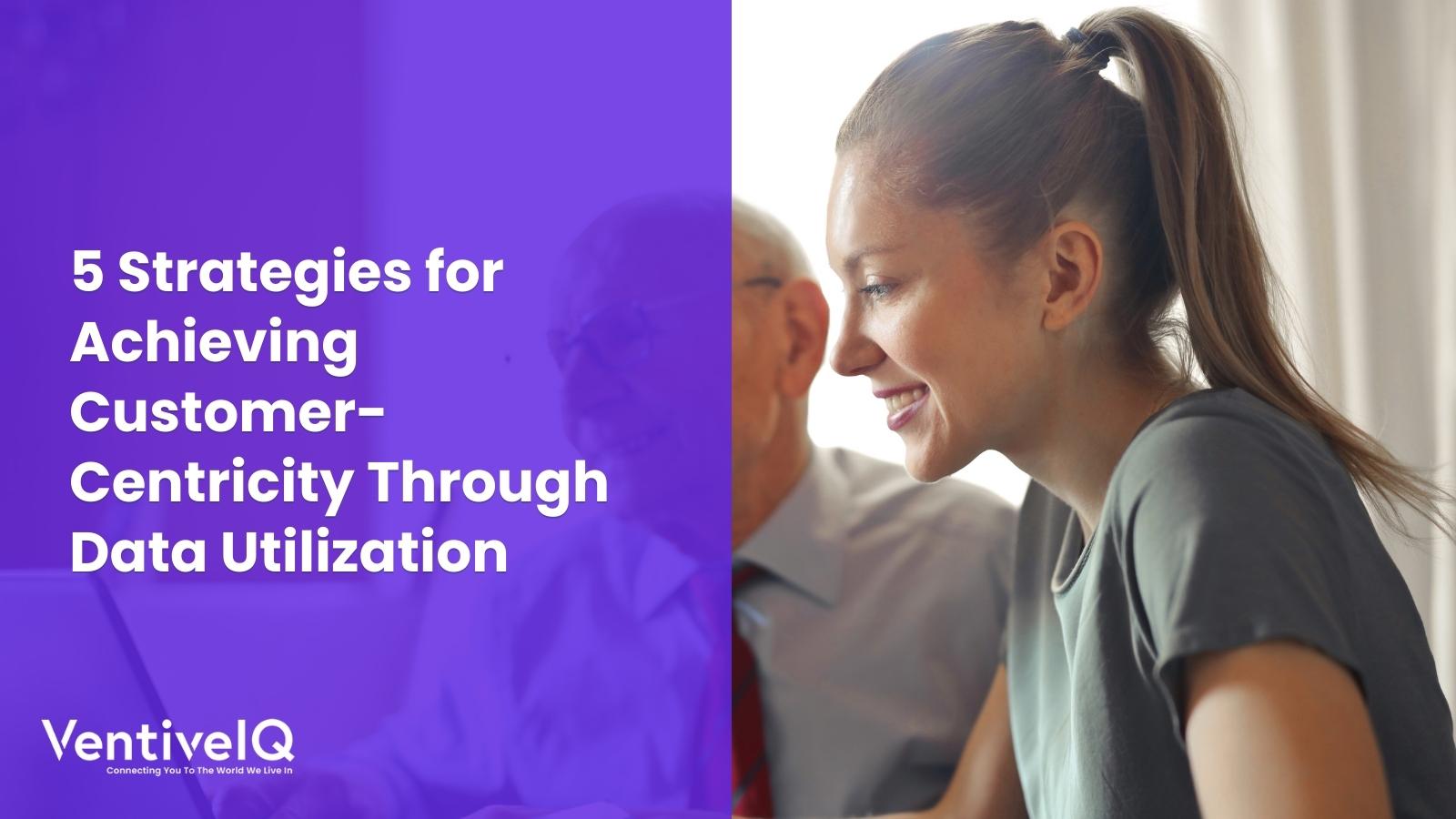Find 5 powerful strategies for achieving customer-centricity via data utilization in your business. Unleash possibilities for expansion & customer contentment.
Introduction to customer-centricity
In today’s competitive marketplace, it is more important than ever for businesses to be audience-centric. This means putting the customer at the heart of everything you do, from product development to marketing to customer service.
One of the best ways to achieve customer-centricity is to utilize data. Data can give you insights into your customers’ needs, preferences, and behaviors. This information can then be used to create more personalized offerings, improve the customer experience, and build stronger customer relationships. To help you on your journey toward becoming a more customer-centric organization, here are five powerful strategies that leverage data to create a more personalized and meaningful customer experience.

1. Collect and Centralize Customer Data
The foundation of any customer-centric strategy lies in data collection. To truly understand your customers, you need to gather information from various touchpoints such as websites, social media, customer support interactions, and sales transactions. Create a centralized database that consolidates this data and allows you to paint a comprehensive picture of each customer’s journey.
For VentiveIQ, this means not only gathering data on customer demographics but also tracking their interactions with your platform. Monitor which features they use most frequently, how long they stay engaged, and what prompts them to convert. The more you know about your customers, the better you can tailor your products and services to their preferences.
2. Implement Advanced Analytics
Once you have a treasure trove of customer data at your disposal, it’s time to harness its power through advanced analytics. This is where keywords like “customer-centricity” and “data utilization” come into play, as they guide your approach. Utilize sophisticated tools and techniques to gain actionable customer insights from your data.
In the USA market, it’s crucial to analyze regional trends and preferences. Are there specific geographic areas where your product is more popular? Are there cultural nuances that impact how customers interact with your brand? Advanced analytics can uncover these insights and help you adapt your strategies accordingly.
3. Segmentation for Personalization
One-size-fits-all marketing no longer works. To achieve customer-centricity, you must segment your customer base into distinct groups based on shared characteristics and behaviors. This segmentation allows you to deliver personalized experiences and targeted messaging.
For VentiveIQ operating in the USA, this could mean segmenting customers by industry, company size, or geographic location. By tailoring your marketing efforts to the unique needs of each group, you’ll increase the relevance of your communications and improve your chances of converting leads into loyal customers.

4. Leverage Automation
As your customer data continues to grow, manually analyzing and responding to every piece of information becomes impractical. Automation becomes your ally in maintaining a high level of customer-centricity. Keyword optimization is essential here as well, as it helps streamline processes and improve efficiency.
Invest in marketing automation tools that can send personalized emails, trigger targeted ads, and even provide automated customer support. By automating routine tasks, your team can focus on high-value activities like crafting personalized marketing campaigns or resolving complex customer issues.
5. Continuous Feedback Loop
Customer-centricity is not a destination but a journey. To stay on the path, establish a continuous feedback loop with your customers. Encourage them to provide feedback on their experiences and actively listen to their suggestions and concerns. Use surveys, social media, and direct conversations to gather insights.
In the USA market, customer feedback is invaluable for adapting to changing market dynamics. Keyword analysis can help identify common themes in customer feedback, highlighting areas that require attention. Act on this feedback promptly to show your customers that their opinions matter and that you’re committed to delivering what they want.
How VentiveIQ can implement these strategies
VentiveIQ can implement these five strategies by using its data and analytics platform. The platform allows businesses to collect, store, and analyze data from a variety of sources, including customer surveys, website analytics, social media data, and CRM systems.
Once the data is collected, VentiveIQ’s platform provides a variety of tools for analyzing the data and identifying insights. These insights can then be used to create personalized offerings, improve the customer experience, anticipate customer needs, and build stronger customer relationships.

For example, VentiveIQ’s platform could be used to:
- Create customer segments based on demographics, psychographics, and purchase history.
- Identify customers who are at risk of churning.
- Recommend products or services to customers based on their past purchase history and interests.
- Send personalized marketing messages to customers based on their segments and interests.
- Monitor Customer Happiness and Pinpoint Enhancement Opportunities.
Conclusion
In today’s highly competitive business landscape, achieving customer-centricity through data utilization is not just an option; it’s a necessity for companies like VentiveIQ operating in the USA. By collecting and centralizing customer data, implementing advanced analytics, segmentation, automation, and maintaining a continuous feedback loop, you can create a more personalized and meaningful customer experience. Remember that customer-centricity is an ongoing process that requires dedication and adaptability. Embrace these strategies, and you’ll not only meet your customers’ expectations but exceed them, fostering long-term loyalty and sustainable growth in the USA market.



